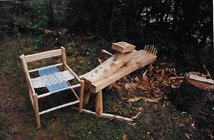Can anyone suggest a good video (or two) on Spindle Gouge techniques and practice for the beginner?
I want to direct some students to something helpful where they can get some help in between classes.
Thanks.
I want to direct some students to something helpful where they can get some help in between classes.
Thanks.


